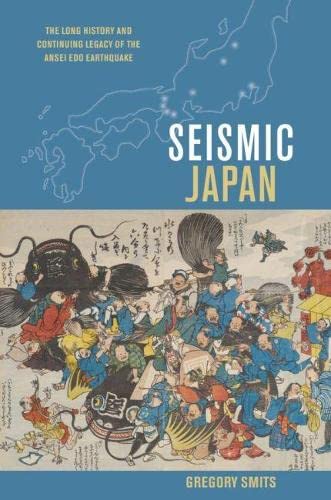Books by Gregory Smits
When the Earth Roars: Lessons from the History of Earthquakes in Japan (Asia/Pacific/Perspectives)
Author(s): Gregory Smits
Publication date: 2014-03-21
ISBN: 1442220090, ISBN-13: 9781442220096
Seismic Japan: The Long History and Continuing Legacy of the Ansei Edo Earthquake
Author(s): Gregory Smits
Publication date: 2013-11-30
ISBN: 0824838173, ISBN-13: 9780824838171
What are we to make of contemporary newspapers in Japan speculating about the possible connection between aquatic creatures and earthquakes? Of a city council deciding to issue evacuation advice based on observed animal behavior? Why, between 1977 and 1993, did Japan’s government spend taxpayer money to observe catfish in aquariums as part of its mandate to fund earthquake prediction research? All of these actions are direct legacies of the 1855 Ansei Edo earthquake, one of the major natural disasters of the period. In his investigation of the science, politics, and lore of seismic events in Japan, Gregory Smits examines this earthquake in a broad historical context.
The Ansei Edo earthquake shook the shogun’s capital during a year of special religious significance and at a time of particularly vigorous seismic activity. It was also a turning point because, according to the prevailing understanding of earthquakes at the time, it should never have happened. Many Japanese, therefore, became receptive to new ideas about the causes of earthquakes as well as to the notion that by observing some phenomena―for example, the behavior of catfish―one might determine when an earthquake would strike. All subsequent major earthquakes in Japan resulted in claims, always made after the fact, that certain phenomena had been signs of the impending catastrophe. Indeed, earthquake prediction in Japan from 1855 to the present has largely consisted of amassing collections of alleged or possible precursor phenomena. In addition, the Ansei Edo earthquake served as a catalyst accelerating socio-political trends already underway. It revealed bakufu military weaknesses and enhanced the prestige of the imperial deity Amaterasu at the expense of the bakufu deity Kashima.
Anyone interested in Japan, earthquakes, and natural disasters will benefit from Seismic Japan. The work also serves as essential background for understanding the peculiar history of earthquake prediction in modern and contemporary Japan.
Economic Thought in Early Modern Japan (Monies, Markets, and Finance in East Asia, 1600-1900)
Author(s):
Publication date: 2010-08-13
ISBN: 9004183833, ISBN-13: 9789004183834
Visions of Ryukyu: Identity and Ideology in Early-Modern Thought and Politics
Author(s): Gregory Smits
Publication date: 1999-01-31
ISBN: 0824820371, ISBN-13: 9780824820374
Penn State University : History
- Jessamyn Abel
- Eliyana Adler
- David Atwill
- Kathleen Baldanza
- Dan Beaver
- William Blair
- Jennifer Boittin
- Erica Brindley
- Tobias Brinkmann
- Jonathan Brockopp
- Gary Cross
- Sophie De Schaepdrijver
- Greg Eghigian
- Garrett Fagan
- Lori Ginzberg
- Amy Greenberg
- Jens-Uwe Guettel
- Ronnie Hsia
- Benjamin Hudson
- Anthony Kaye
- Michael Kulikowski
- Prakash Kumar
- Daniel Letwin
- Russell Lohse
- Bryan McDonald
- Kate Merkel-Hess
- Mark Munn
- On-Cho Ng
- Maia Ramnath
- Carol Reardon
- Matthew Restall
- A. Gregg Roeber
- Anne Rose
- Nina Safran
- Kathryn Salzer
- Crystal Sanders
- Tatiana Seijas
- Gregory Smits
- Catherine Wanner
- Nan Elizabeth Woodruff
- Ran Zwigenberg
Most popular books
Link to this page using the following URL: https://www.facultybookshelf.org/author/gregory_smits



